
Available 24/7
Available 24/7

Medicinal plants are useful to keep on hand to treat common ailments. You can reach for certain medical plants to relieve headaches, tummy trouble and even irritation from bug bites.
Note: It’s important to remember that you should always double-check with your doctor before consuming or using anything new for your body.
How long have people been using plants medicine?
Our earliest human ancestors found plants to heal wounds, cure diseases, and ease troubled minds.
Evidence exists that plants were used for medicinal purposes some 60,000 years ago. A burial site of a Neanderthal man was uncovered in 1960.
Eight species of plants had been buried with him, some of which are still used for medicinal purposes today.
If you choose to grow some of these plants, remember to take proper care according to the plant’s care guidelines and refrain from using any pesticides or other harmful chemicals on your plants.
Here is list of 150 plants as medicine:
Scientific name: Polemonium reptans
It is used to reduce fever, inflammation, and cough.
Scientific name: Euterpe oleracea
Although acai berries are a longstanding food source for indigenous people of the Amazon, there is no evidence that they have historically served a medicinal, as opposed to nutritional role.
In spite of their recent popularity in the United States as a dietary supplement, there is currently no evidence for their effectiveness for any health-related purpose.
Scientific name: Frangula alnus
Bark (and to a lesser extent the fruit) has been used as a laxative, due to its 3 – 7% anthraquinone content.
Bark for medicinal use is dried and stored for a year before use, as fresh bark is violently purgative; even dried bark can be dangerous if taken in excess.
Scientific name: Medicago sativa
The leaves are used to lower cholesterol, as well as forum kidney and urinary tract ailments, although there is insufficient scientific evidence for its efficacy.
Scientific name: Aloe vera
Leaves are widely used to heal burns, wounds and other skin ailments.
Scientific name: Quassia amara
A 2012 study found a topical gel with 4% Quassia extract to be a safe and effective cure of rosacea.
Scientific name: Arnica montana
Used as an anti-inflammatory and for osteoarthritis. The US Food and Drug Administration has classified Arnica montana as an unsafe herb because of its toxicity. It should not be taken orally or applied to broken skin where absorption can occur.
Scientific name: Ferula assa-foetida
Might be useful for IBS, high cholesterol, and breathing problems.
Scientific name: Saraca indica
The plant is used in Ayurvedic traditions to treat gynecological disorders. The bark is also used to combat oedema or swelling.
Scientific name: Withania somnifera
The plant's long, brown, tuberous roots are used in traditional medicine. In Ayurveda, the berries and leaves are applied externally to tumors, tubercular glands, carbuncles, and ulcers.
Scientific name: Euphorbia hirta
Used traditionally in Asia to treat bronchitic asthma and laryngeal spasm. It is used in the Philippines for dengue fever.
Scientific name: Astragalus propinquus
Long been used in traditional Chinese medicine to strengthen the immune system, and is used in modern China to treat hepatitis and as an adjunctive therapy in cancer.
Scientific name: Senna auriculata
The root is used in decoctions against fevers, diabetes, diseases of urinary system and constipation. The leaves have laxative properties.
The dried flowers and flower buds are used as a substitute for tea in case of diabetes patients. The powdered seed is also applied to the eye, in case of chronic purulent conjunctivitis.
Scientific name: Berberis vulgaris
Long history of medicinal use, dating back to the Middle Ages particularly among Native Americans. Uses have included skin ailments, scurvy and gastro-intestinal ailments.
Scientific name: Laurus nobilis
Aqueous extracts of bay laurel can be used as astringents and even as a reasonable salve for open wounds.
In massage therapy, the essential oil of bay laurel is reputed to alleviate arthritis and rheumatism, while in aromatherapy it is used to treat earaches and high blood pressure.
Scientific name: Atropa belladonna
Although toxic, was used historically in Italy by women to enlarge their pupils, as well as a sedative, among other uses. The name itself means "beautiful woman" in Italian.
Scientific name: Vaccinium myrtillus
It is used to treat diarrhea, scurvy, and other conditions.
Scientific name: Vernonia amygdalina
The plant is used by both primates and indigenous peoples in Africa to treat intestinal ailments such as dysentery.
Scientific name: Momordica charantia
The plant is used as an agent to reduce the blood glucose level.
Scientific name: Citrus × aurantium
Used in traditional Chinese medicine and by indigenous peoples of the Amazon for nausea, indigestion and constipation.
Scientific name: Actaea racemosa
Historically used for arthritis and muscle pain, used more recently for conditions related to menopause and menstruation.
Scientific name: Cnicus benedictus
Used during the Middle Ages to treat bubonic plague. In modern times, herbal teas made from blessed thistle are used for loss of appetite, indigestion and other purposes.
Scientific name: Stachytarpheta cayennensis
Extracts of the plant are used to ease the symptoms of malaria. The boiled juice or a tea made from the leaves or the whole plant is taken to relieve fever and other symptoms. It is also used for dysentery, pain, and liver disorders.
A tea of the leaves is taken to help control diabetes in Peru and other areas. Laboratory tests indicate that the plant has anti-inflammatory properties.
Scientific name: Vaccinium spec.
They are of current medical interest as an antioxidant and for urinary tract ailments.
Scientific name: Borago officinalis
Used in hyperactive gastrointestinal, respiratory and cardiovascular disorders, such as gastrointestinal (colic, cramps, diarrhea), airways (asthma, bronchitis), cardiovascular, (cardiotonic, antihypertensive and blood purifier), urinary (diuretic and kidney/ bladder disorders).
Scientific name: Arctium lappa
Used traditionally as a diuretic and to lower blood sugar and, in traditional Chinese medicine as a treatment for sore throat and symptoms of the common cold.
Scientific name: Eschscholzia californica
Used as an herbal remedy: an aqueous extract of the plant has sedative and anxiolytic actions.
Scientific name: Cannabis
Used worldwide since ancient times as treatment for various conditions and ailments including pain, inflammation, gastrointestinal issues such as IBS, muscle relaxation, anxiety, Alzheimer's and dementia, ADHD, autism, cancer, cerebral palsy, recurring headaches, Crohn's disease, depression, epilepsy, glaucoma, insomnia, and neuropathy among others.
Scientific name: Uncaria tomentosa
It has a long history of use in South America to prevent and treat disease.
Scientific name: Capsicum annuum
Type of chili that has been used as both food and medicine for thousands of years. Uses have included reducing pain and swelling, lowering triglyceride and cholesterol levels and fighting viruses and harmful bacteria, due to high levels of Vitamin C.
Scientific name: Apium graveolens
Seed is used only occasionally in tradition medicine. Modern usage is primarily as a diuretic.
Scientific name: Matricaria recutita and Anthemis nobilis
It has been used over thousands of years for a variety of conditions, including sleeplessness, anxiety, and gastrointestinal conditions such as upset stomach, gas, and diarrhea.
Scientific name: Larrea tridentata
The leaves and twigs are used by Native Americans to make a herbal tea used for a variety of conditions, including arthritis, cancer and a number of others. Subsequent studies have been extremely variable, at best.
Chaparral has also been shown to have high liver toxicity, and has led to kidney failure, and is not recommended for any use by the U.S. Food and Drug Administration (FDA) or American Cancer Society.
Scientific name: Trema orientalis
The leaves and the bark are used to treat coughs, sore throats, asthma, bronchitis, gonorrhea, yellow fever, toothache, and as an antidote to general poisoning.
Scientific name: Vitex agnus-castus
It has been used for over thousands of years for menstrual problems, and to stimulate lactation.
Scientific name: Capsicum frutescens
Its active ingredient, capsaicine, is the basic of commercial pain-relief ointments in Western medicine. The low incidence of heart attack in Thais may be related to capsaicine's fibronolytic action (dissolving blood clots).
Scientific name: Cinchona spec.
Genus of about 38 species of trees whose bark is a source of alkaloids, including quinine. Its use as a febrifuge was first popularized in the 17th century by Peruvian Jesuits.
Scientific name: Rosa majalis
It yields edible hip fruits rich in vitamin C, which are used in medicine and to produce rose hip syrup.
39. Clove
Scientific name: Syzygium aromaticum
The plant is used for upset stomach and as an expectorant, among other purposes. The oil is used topically to treat toothache.
Scientific name: Cassia occidentalis
Used in a wide variety of roles in traditional medicine, including in particular as a broad-spectrum internal and external antimicrobial, for liver disorders, for intestinal worms and other parasites and as an immune-system stimulant.
41. Comfrey
Scientific name: Symphytum officinale
It has been used as a vulnerary and to reduce inflammation. It was also used internally in the past, for stomach and other ailments, but its toxicity has led a number of other countries, including Canada, Brazil, Australia, and the United Kingdom, to severely restrict or ban the use of comfrey.
Scientific name: Stellaria media
It has been used as a remedy to treat itchy skin conditions and pulmonary diseases. 17th-century herbalist John Gerard recommended it as a remedy for mange. Modern herbalists prescribe it for iron-deficiency anemia (for its high iron content), as well as for skin diseases, bronchitis, rheumatic pains, arthritis and period pain.
Scientific name: Anemone hepatica
Historically used to treat liver diseases, it is still used in alternative medicine today. Other modern applications by herbalists include treatments for pimples, bronchitis and gout.
Scientific name: Alcea rosea
Believed to be an emollient and laxative. It is used to control inflammation, to stop bedwetting and as a mouthwash in cases of bleeding gums.
Scientific name: Verbascum thapsus
It contains glycyrrhizin compounds with bactericide and potential anti-tumoral action. These compounds are concentrated in the flowers.
Scientific name: Urtica dioica
It has been used in the traditional Austrian medicine internally (as tea or fresh leaves) to treat disorders of the kidneys and urinary tract, gastrointestinal tract, locomotor system, skin, cardiovascular system, hemorrhage, influenza, rheumatism, and gout.
Scientific name: Hamamelis virginiana
It produces a specific kind of tannins called hamamelitannins. One of those substances displays a specific cytotoxic activity against colon cancer cells.
Scientific name: Achillea millefolium
Purported to be a diaphoretic, astringent, tonic, stimulant and mild aromatic.
Scientific name: Centaurea cyanus
In herbalism, a decoction of cornflower is effective in treating conjunctivitis and as a wash for tired eyes.
Scientific name: Santolina chamaecyparissus
Most commonly, the flowers and leaves are made into a decoction used to expel intestinal parasites.
Scientific name: Vaccinium macrocarpon
It was used historically as a vulnerary and for urinary disorders, diarrhea, diabetes, stomach ailments, and liver problems. Modern usage has concentrated on urinary tract related problems.
Scientific name: Rumex crispus
In Western herbalism the root is often used for treating anemia, due to its high level of iron. The plant will help with skin conditions if taken internally or applied externally to things like itching, scrofula, and sores. It is also used for respiratory conditions, specifically those with a tickling cough that is worse when exposed to cold air. It mentions also passing pains, excessive itching, and that it helps enlarged lymphs.
Scientific name: Bellis perennis
Flowers have been used in the traditional Austrian medicine internally as tea (or the leaves as a salad) for treatment of disorders of the gastrointestinal and respiratory tract.
Scientific name: Taraxacum officinale
It was most commonly used historically to treat liver diseases, kidney diseases, and spleen problems.
Scientific name: Digitalis lanata
It came into use in treating cardiac disease in late 18th century England in spite of its high toxicity.a Its use has been almost entirely replaced by the pharmaceutical derivative Digoxin, which has a shorter half-life in the body, and whose toxicity is therefore more easily managed. Digoxin is used as an antiarrhythmic agent and inotrope.
Scientific name: Angelica sinensis
Used for thousands of years in Asia, primarily in women's health.
Scientific name: Moringa oleifera
It is used for food and traditional medicine. It is undergoing preliminary research to investigate potential properties of its nutrients and phytochemicals
Scientific name: Sambucus nigra
The berries and leaves have traditionally been used to treat pain, swelling, infections, coughs, and skin conditions and, more recently, flu, common cold, fevers, constipation, and sinus infections.
Scientific name: Inula helenium
It is used in herbal medicine as an expectorant and for water retention.
Scientific name: Eucalyptus globulus
Leaves were widely used in traditional medicine as a febrifuge. Eucalyptus oil is commonly used in over-the-counter cough and cold medications, as well as for an analgesic.
Scientific name: Viscum album
It has been used to treat seizures, headaches, and other conditions.
Scientific name: Oenothera
Its oil has been used since the 1930s for eczema, and more recently as an anti-inflammatory.
Scientific name: Reichardia tingitana
Uses in folk medicine have been recorded in the Middle East, its leaves being used to treat ailments such as constipation, colic and inflamed eyes.
Scientific name: Trigonella foenum-graecum
It has long been used to treat symptoms of menopause, and digestive ailments. More recently, it has been used to treat diabetes, loss of appetite and other conditions
Scientific name: Tanacetum parthenium
The plant has been used for centuries for fevers, headaches, stomach aches, toothaches, insect bites and other conditions.
Scientific name: Knautia arvensis
The whole plant is astringent and mildly diuretic. An infusion is used internally as a blood purifier and externally for treating cuts, burns and bruises.
Scientific name: Linum usitatissimum
The plant is most commonly used as a laxative. Flaxseed oil is used for different conditions, including arthritis.
Scientific name: Fumaria officinalis
Traditionally thought to be good for the eyes and to remove skin blemishes. In modern times herbalists use it to treat skin diseases and conjunctivitis, as well as to cleanse the kidneys. However, Howard (1987) warns that fumitory is poisonous and should only be used under the direction of a medical herbalist.
Scientific name: Angelica archangelica
Roots have been used in the traditional Austrian medicine internally as tea or tincture for treatment of disorders of the gastrointestinal tract, respiratory tract, nervous system, and also against fever, infections, and flu.
Scientific name: Allium sativum
Widely used as an antibiotic and, more recently, for treating cardiovascular disease Garlic is a monoamine oxidase inhibitor and has antidepressant-like effects on mice so might be used as a herbal antidepressant or anxiolytic in humans.
Scientific name: Zingiber officinale
The plant is used to relieve nausea.
Scientific name: Ginkgo biloba
The leaf extract has been used to treat asthma, bronchitis, fatigue, Alzheimer's and tinnitus.
Scientific name: Panax spec.
Used medicinally, in particular in Asia, for over 2,000 years, and is widely used in modern society.
Scientific name: Hydrastis canadensis
It was used traditionally by Native Americans to treat skin diseases, ulcers, and gonorrhea. More recently, the herb has been used to treat the respiratory tract and a number of other infections.
Scientific name: Vitis vinifera
The leaves and fruit have been used medicinally since the ancient Greeks.
Scientific name: Glechoma hederacea
It has been used as a "lung herb". Other traditional uses include as an expectorant, astringent, and to treat bronchitis. The essential oil of the plant has been used for centuries as a general tonic for colds and coughs, and to relieve congestion of the mucous membranes.
Scientific name: Psidium guajava
It has a rich history of use in traditional medicine. It is traditionally used to treat diarrhea; however, evidence of its effectiveness is very limited.
Scientific name: Acacia senegal
A natural gum sourced from hardened sap of various species of acacia tree used as a binder and emulsifier.
Scientific name: Crataegus monogyna and Crataegus laevigata
Fruit has been used for centuries for heart disease. Other uses include digestive and kidney related problems.
Scientific name: Lawsonia inermis
The plants exhibits potential antibacterial activity. The alcoholic extract of the root has antibacterial activity due to the presence of flavonoid and alkaloids. Henna is also thought to show anti-inflammatory, antipyretic, and analgesic effects in experimental animals.
Scientific name: Hoodia gordonii
The plant is traditionally used by Kalahari San (Bushmen) to reduce hunger and thirst. It is currently marketed as an appetite suppressant.
Scientific name: Aesculus hippocastanum
Its seeds, leaves, bark, and flowers have been used medicinally for many centuries. The raw plant materials are toxic unless processed.
Scientific name: Equisetum arvense
Dates back to ancient Roman and Greek medicine, when it was used to stop bleeding, heal ulcers and wounds, and treat tuberculosis and kidney problems.
Scientific name: Hyssopus officinalis
It is used for digestive and intestinal problems including liver and gallbladder conditions, intestinal pain, intestinal gas, colic, and loss of appetite. It is also used for respiratory problems including coughs, the common cold, respiratory infections, sore throat, and asthma.
Scientific name: Tradescantia zebrina
It is used in southeast Mexico in the region of Tabasco as a cold herbal tea, which is named Matali. Skin irritation may result from repeated contact with or prolonged handling of the plant, particularly from the clear, watery sap (a characteristic unique to T. zebrina as compared with other types).
Scientific name: Santalum album
Sandalwood oil has been widely used in folk medicine for treatment of common colds, bronchitis, skin disorders, heart ailments, general weakness, fever, infection of the urinary tract, inflammation of the mouth and pharynx, liver and gallbladder complaints and other maladies.
Scientific name: Piscidia erythrina / Piscidia piscipula
The plant is used in traditional medicine for the treatment of insomnia and anxiety, despite serious safety concerns. A 2006 study suggested medicinal potential.
Scientific name: Youngia japonica
The plant is antitussive and febrifuge. It is also used in the treatment of boils and snakebites.
Scientific name: Jasminum officinale
It is used in dermatology as either an antiseptic or anti-inflammatory agent.
Scientific name: Sceletium tortuosum
African treatment for depression. Suggested to be an SSRI or have similar effects, but unknown mechanism of activity.
Scientific name: Strobilanthes callosus
The plant is anti-inflammatory, antimicrobial, and anti-rheumatic.
Scientific name: Piper methysticum
The plant has been used for centuries in the South Pacific to make a ceremonial drink with sedative and anesthetic properties. It is used as a soporific, as well as for asthma and urinary tract infection
Scientific name: Catha edulis
Mild stimulant used for thousands of years in Yemen, and is banned today in many countries. Contains the amphetamine-like substance cathinone.
Scientific name: Amorphophallus konjac
Significant dietary source of glucomannan, which is used in treating obesity, constipation, and reducing cholesterol.
Scientific name: Mitragyna speciosa
Kratom is known to prevent or delay withdrawal symptoms in an opioid-dependent individual, and it is often used to mitigate cravings thereafter. It can also be used for other medicinal purposes. Kratom has been traditionally used in regions such as Malaysia, Thailand, and Indonesia.
Scientific name: Viburnum tinus
V. tinus has medicinal properties. The active ingredients are viburnin (a substance or more probably a mixture of compounds) and tannins. Tannins can cause stomach upset. The leaves when infused have antipyretic properties. The fruits have been used as purgatives against constipation. The tincture has been used lately in herbal medicine as a remedy for depression. The plant also contains iridoid glucosides.
Scientific name: Lavandula angustifolia
It was traditionally used as an antiseptic and for mental health purposes. It was also used in ancient Egypt in mummifying bodies. There is little scientific evidence that lavender is effective for most mental health uses.
Scientific name: Citrus limon
Along with other citruses, it has a long history of use in Chinese and Indian traditional medicine. In contemporary use, honey and lemon is common for treating coughs and sore throat.
Scientific name: Melissa officinalis
It is used as a sleep aid and digestive aid.
Scientific name: Glycyrrhiza glabra
It has a long history of medicinal usage in Eastern and Western medicine. Uses include stomach ulcers, bronchitis, and sore throat, as well as infections caused by viruses, such as hepatitis.
Scientific name: Nelumbo nucifera
Sacred lotus has been the subject of a number of in-vitro and animal studies, exploring its pharmacologic effects, including antioxidant, hepatoprotective, immunomodulatory, anti-infective, hyperlipidemic, and psychopharmacologic activity although clinical trials are lacking.
Scientific name: Magnolia officinalis
The bark contains magnolol and honokiol, two polyphenolic compounds. Preclinical studies have evaluated their various potential applications including antioxidant, anti-inflammatory, antitumor, and antimicrobial properties.
Scientific name: Malva sylvestris
The seeds are used internally in a decoction or herbal tea as a demulcent and diuretic, and the leaves made into poultices as an emollient for external applications.
Scientific name: Calendula officinalis
Also named calendula, has a long history of use in treating wounds and soothing skin
Scientific name: Althaea officinalis
Used for over 2,000 years as both a food and a medicine
Scientific name: Silybum marianum
It has been used for thousands of years for a variety of medicinal purposes, in particular liver problems.
Scientific name: Ruellia tuberosa
In folk medicine and Ayurvedic medicine it has been used as a diuretic, anti-diabetic, antipyretic, analgesic, antihypertensive, gastroprotective, and to treat gonorrhea.
Scientific name: Xanthoparmelia scabrosa
It is a lichen used for sexual dysfunction.
Scientific name: Azadirachta indica
Used in India to treat worms, malaria, rheumatism and skin infections among many other things. Its many uses have led to neem being called "the village dispensary" in India.
Scientific name: Nigella sativa
It has efficacy as a therapy, mainly using the seed oil extract, volatile oil, and isolated constituent thymoquinone. One meta-analysis of clinical trials concluded that N. sativa has a short-term benefit on lowering systolic and diastolic blood pressure.
Scientific name: Morinda citrifolia
It has a history of use as for joint pain and skin conditions.
Scientific name: Papaver somniferum
The plant is the plant source of morphine, used for pain relief. Morphine made from the refined and modified sap is used for pain control in terminally ill patients. Dried sap was used as a traditional medicine until the 19th century.
113. Oregano
Scientific name: Origanum vulgare
Used as an abortifacient in folk medicine in some parts of Bolivia and other northwestern South American countries, though no evidence of efficacy exists in Western medicine. Hippocrates used oregano as an antiseptic, as well as a cure for stomach and respiratory ailments. A Cretan oregano (O. dictamnus) is still used today in Greece as a palliative for sore throat. Evidence of efficacy in this matter is lacking.
Scientific name: Carica papaya
Used for treating wounds and stomach troubles.
Scientific name: Passiflora
Thought to have anti-depressant properties. Unknown MOA. Used in traditional medicine to aid with sleep or depression.
Scientific name: Mentha x piperita
Its oil, from a cross between water mint and spearmint, has a history of medicinal use for a variety of conditions, including nausea, indigestion, and symptoms of the common cold.
Scientific name: Plantago lanceolata
It is used frequently in herbal teas and other herbal remedies. A tea from the leaves is used as a highly effective cough medicine. In the traditional Austrian medicine Plantago lanceolata leaves have been used internally (as syrup or tea) or externally (fresh leaves) for treatment of disorders of the respiratory tract, skin, insect bites, and infections.
Scientific name: Platycodon grandiflorus
The extracts and purified platycoside compounds (saponins) from the roots may exhibit neuroprotective, antimicrobial, anti-inflammatory, anti-cancer, anti-allergy, improved insulin resistance, and cholesterol-lowering properties.
Scientific name: Echinacea purpurea
This plant and other species of Echinacea have been used for at least 400 years by Native Americans to treat infections and wounds, and as a general "cure-all" (panacea). It is currently used for symptoms associated with cold and flu
Scientific name: Trifolium pratense
The plant is an ingredient in some recipes for essiac tea. Research has found no benefit for any human health conditions.
Scientific name: Geranium robertianum
In traditional herbalism, it was used as a remedy for toothache and nosebleeds and as a vulnerary (used for or useful in healing wounds).
Scientific name: Rosmarinus officinalis
It has been used medicinally from ancient times.
Scientific name: Salvia officinalis
Shown to improve cognitive function in patients with mild to moderate Alzheimer's disease
Scientific name: Broussonetia kurzii
Known as Salae in Thailand where this species is valued as a medicinal plant.
Scientific name: Cayaponia espelina
It is a diuretic and aid in the treatment of diarrhea and syphilis.
Scientific name: Hippophae rhamnoides
The leaves are used as herbal medicine to alleviate cough and fever, pain, and general gastrointestinal disorders as well as to cure dermatologic disorders. Similarly, the fruit juice and oils can be used in the treatment of liver disease, gastrointestinal disorders, chronic wounds or other dermatological disorders.
Scientific name: Sesuvium portulacastrum
The plant extract showed antibacterial and anticandidal activities and moderate antifungal activity.
Scientific name: Tilia cordata
In the countries of Central, Southern and Western Europe, linden flowers are a traditional herbal remedy made into an herbal tea called tisane.
Scientific name: Galanthus
It contains an active substance called galantamine, which is an acetylcholinesterase inhibitor. Galantamine (or galanthamine) can be helpful in the treatment of Alzheimer's disease, though it is not a cure.
Scientific name: Hypericum perforatum
Widely used within herbalism for depression. Evaluated for use as an antidepressant, but with ambiguous results.
Scientific name: Illicium verum
It is the major source of the chemical compound shikimic acid, a primary precursor in the pharmaceutical synthesis of anti-influenza drug oseltamivir (Tamiflu).
Scientific name: Satureja hortensis
Its extracts show antibacterial and antifungal effects on several species including some of the antibiotic resistant strains.
Scientific name: Leucojum aestivum
It is known to contain Galantamine (Nivalin, Razadyne, Razadyne ER, Reminyl, Lycoremine in pharmaceutical format). It is used for the treatment of mild to moderate Alzheimer's disease and various other memory impairments, in particular those of vascular origin.
Scientific name: Peganum harmala
Can be used as an antidepressant, but carries significant risk. Used in traditional shamanistic rites in the amazon, and is a component of Ayahuasca, Caapi or Yajé (which is actually usually Banisteriopsis caapi but has the same active alkaloids).
Scientific name: Melaleuca alternifolia
It has been used medicinally for centuries by Australian aboriginal people. Modern usage is primarily as an antibacterial or antifungal agent.
Scientific name: Thymus vulgaris
The plant is used to treat bronchitis and cough. It serves as an antispasmodic and expectorant in this role. It has also been used in many other medicinal roles in Asian and Ayurvedic medicine, although it has not been shown to be effective in non-respiratory medicinal roles.
Scientific name: Citrus trifoliata
Fruits of Citrus trifoliata are widely used in Oriental medicine as a treatment for allergic inflammation.
Scientific name: Ocimum tenuiflorum
It is used for a variety of purposes in traditional medicine; tulsi is taken in many forms: as herbal tea, dried powder, fresh leaf or mixed with ghee. Essential oil extracted from Karpoora tulasi is mostly used for medicinal purposes and in herbal cosmetics.
Scientific name: Curcuma longa
Spice that lends its distinctive yellow color to Indian curries, has long been used in Ayurvedic and traditional Chinese medicine to aid digestion and liver function, relieve arthritis pain, and regulate menstruation.
Scientific name: Cissampelos pareira
Used for a wide variety of conditions.
Scientific name: Verbena officinalis
It is used for sore throats and respiratory tract diseases.
Scientific name: Veronica officinalis
The plant is used for sinus and ear infections.
Scientific name: Chrysopogon zizanioides
Used for skin care.
Scientific name: Ptelea trifoliata
The root bark is used for the digestive system. Also known as hoptree.
Scientific name: Euonymus atropurpureus
Plant is a purgative and might affect the heart.
Scientific name: Teucrium scordium
It has been used for asthma, diarrhea, fever, intestinal parasites, hemorrhoids, and wounds.
Scientific name: Nasturtium officinale
It may be diuretic and antibacterial.
Scientific name: Triticum aestivum
It may contain antioxidant and anti-inflammatory compounds.
Scientific name: Turnera subulata
It is used for skin, gastrointestinal, and respiratory ailments. Laboratory tests showed it has some inhibitory activity against various fungi, such as Candida glabrata, Aspergillus flavus, A. niger, A. fumigatus, Penicillium chrysogenum, and Candida albicans.
Scientific name: Ageratina altissima
Root tea has been used to treat diarrhea, kidney stones, and fever. A root poultice can be used on snakebites.
The propagation of plant medicine has been a fundamental operation of mankind. When new kinds of plants have to be conserved or propagated, we need to develop knowledge and techniques to propagate them.
An appropriate propagation technology can be selected for each kind of plants medicine depending upon plant growth
Traditional plants medicine is still recognized as the preferred primary health care system in many communities, with over 60% of the world’s population and about 80% in developing countries depending directly on medicinal plants for their medical purposes.
This is due to a number of reasons including affordability, accessibility, and low cost.
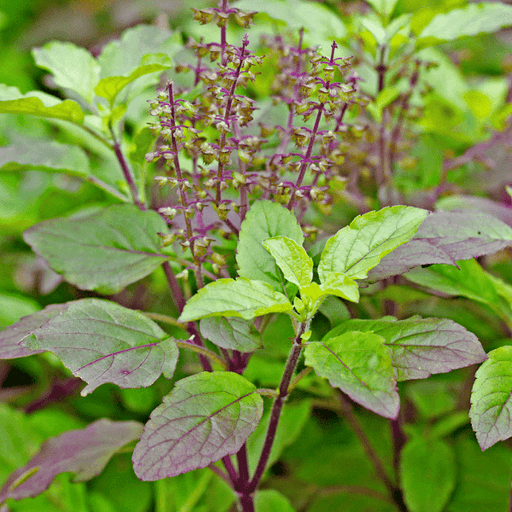 Save 15%
Save 15%
Krishna Tulsi (Black) - 0.5 kg Seeds Discover the divine essence of Krishna Tulsi, also known as Black Tulsi, with our premium 0.5 kg seed...
View full details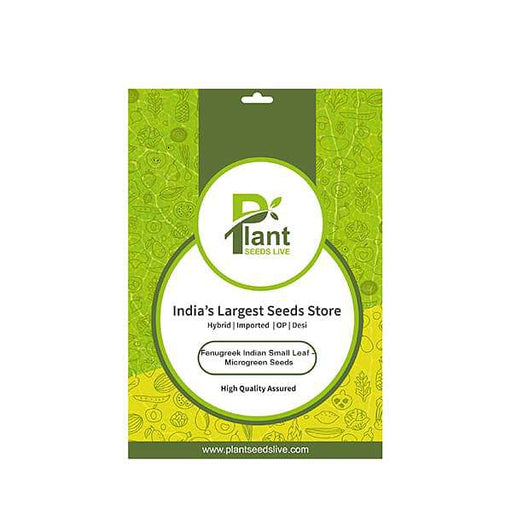
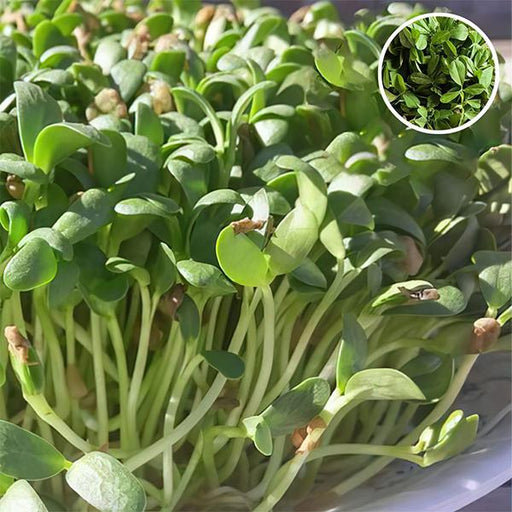 Save 35%
Save 35%
Fenugreek Indian Small Leaf - Microgreen Seeds Discover the vibrant taste and health benefits of Fenugreek Indian Small Leaf Microgreen Se...
View full details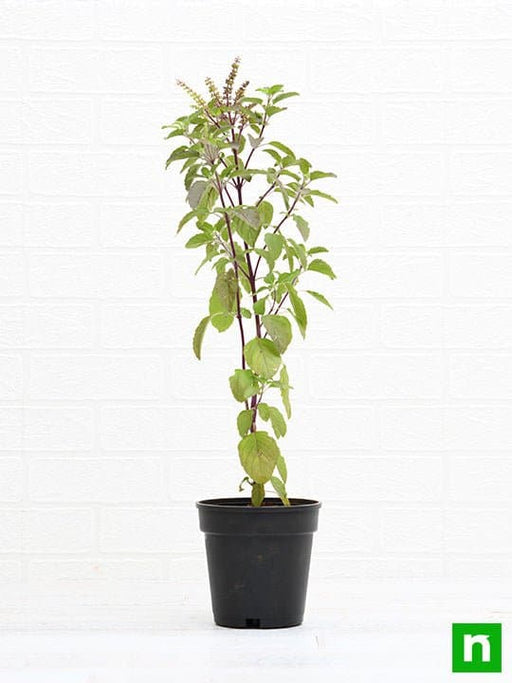
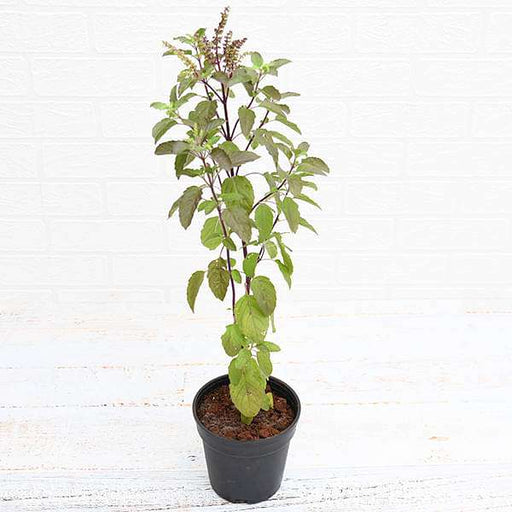 Save 26%
Save 26%
Krishna Tulsi Plant, Holy Basil, Ocimum tenuiflorum (Black) - Plant The Krishna Tulsi Plant, also known as Holy Basil, is a revered herb i...
View full details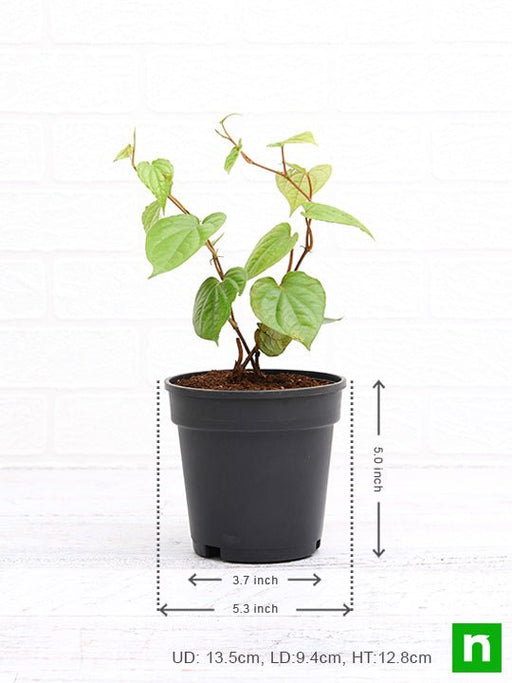
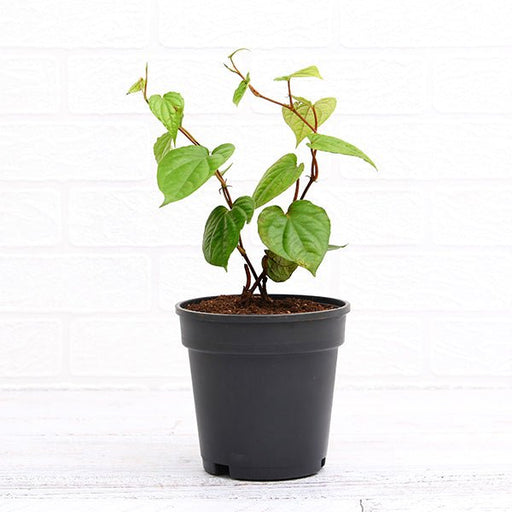 Save 26%
Save 26%
Piper Betel, Maghai Paan - Plant Piper Betel, commonly known as Maghai Paan, is a tropical vine renowned for its heart-shaped leaves and a...
View full details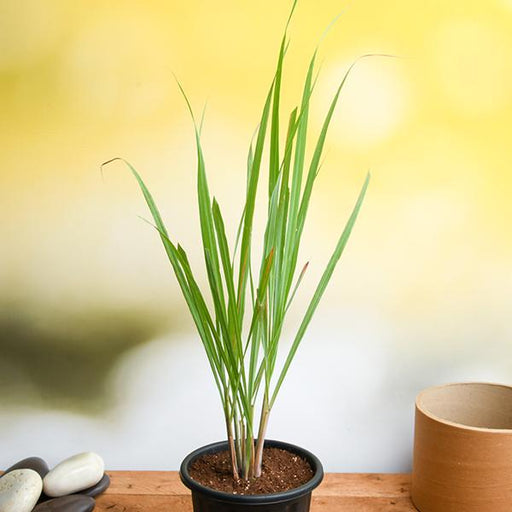
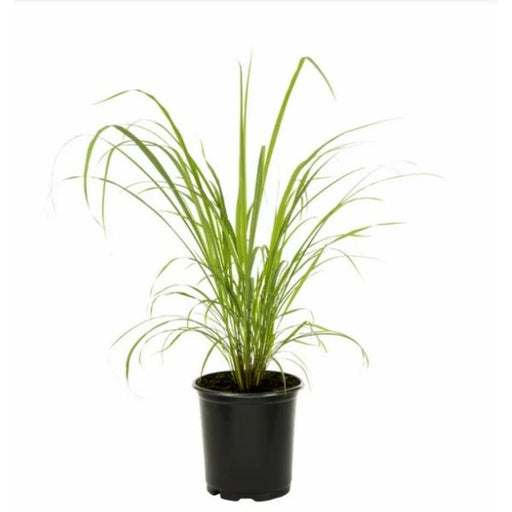 Save 26%
Save 26%
Lemon Grass - Plant Lemon Grass (Cymbopogon citratus) is a tropical perennial grass known for its aromatic leaves and culinary versatility. This v...
View full details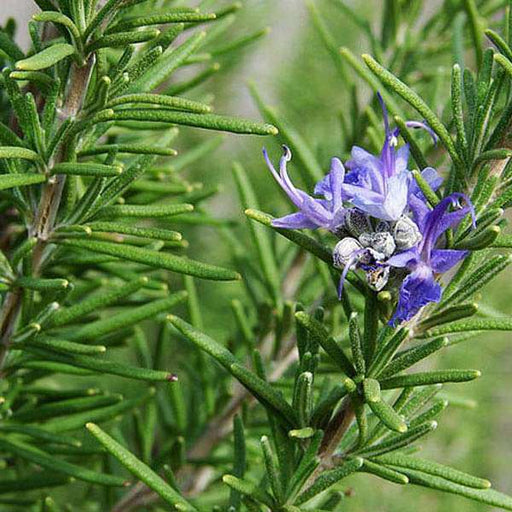 Save 35%
Save 35%
Rosemary - Herb Seeds Discover the aromatic world of Rosemary with our premium herb seeds. Known scientifically as Salvia rosmarinus, this...
View full details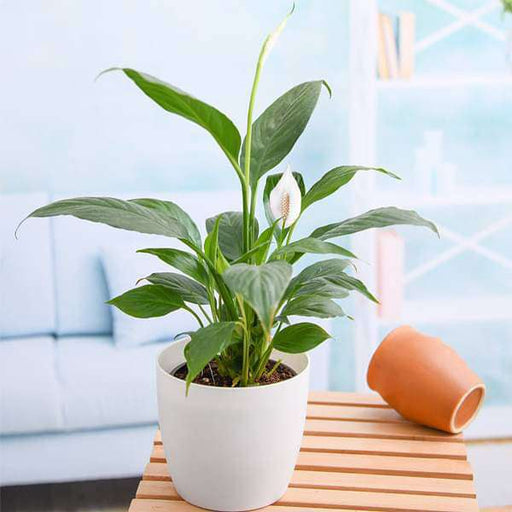
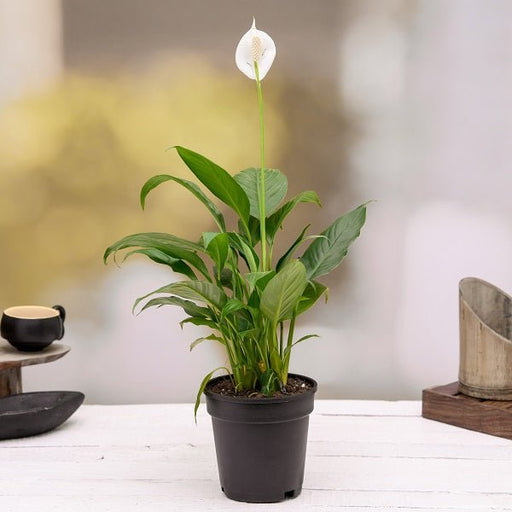 Save up to 15%
Save up to 15%
Peace Lily, Spathiphyllum - Plant The Peace Lily, scientifically known as Spathiphyllum, is a stunning houseplant celebrated for its elegant white...
View full details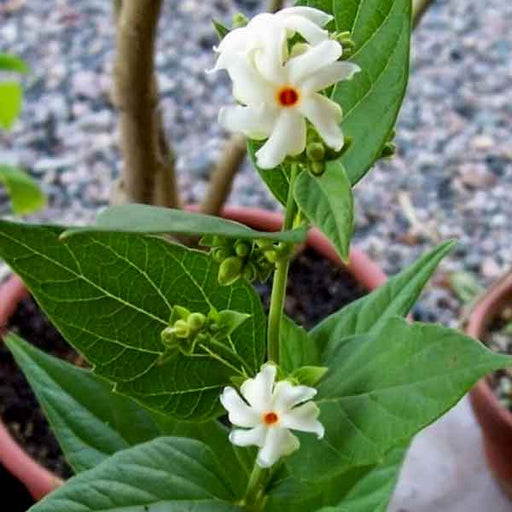
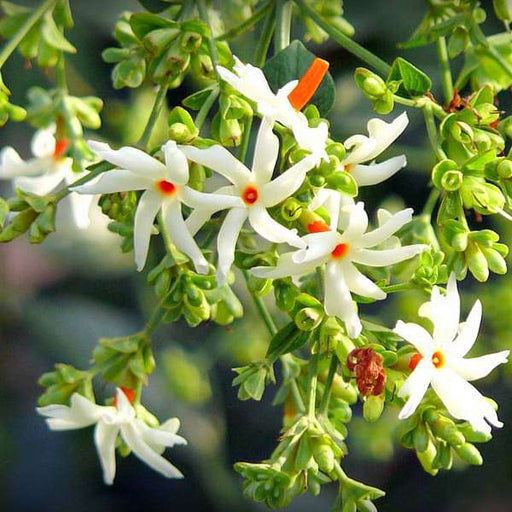 Save 18%
Save 18%
Combo Constituents Includes the Parijat Tree (Night-Flowering Jasmine), a culturally significant plant with fragrant flowers. Description The Pari...
View full details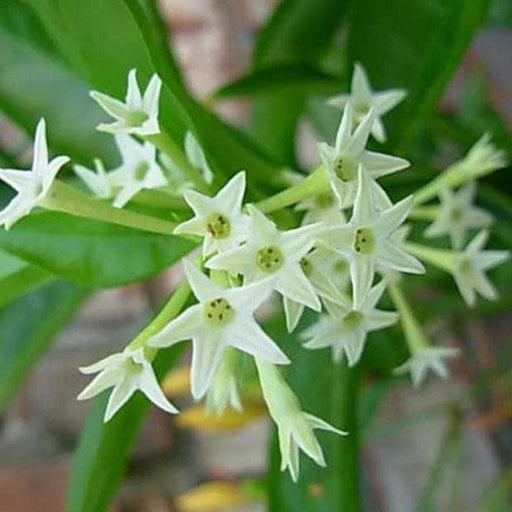
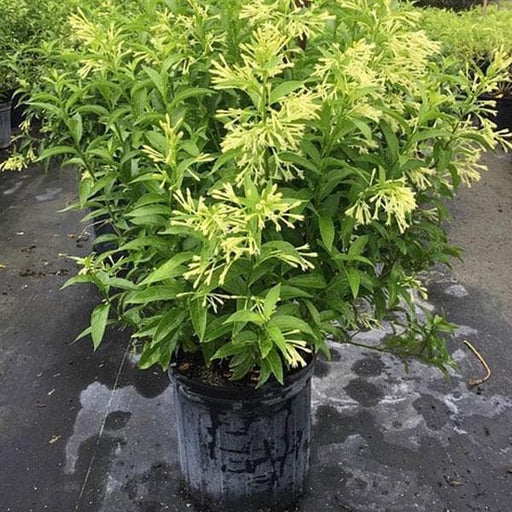 Save 25%
Save 25%
Description Raat Ki Rani (*Cestrum nocturnum*), also known as Night Blooming Jasmine, is a fragrant shrub native to the Caribbean and Central Ameri...
View full details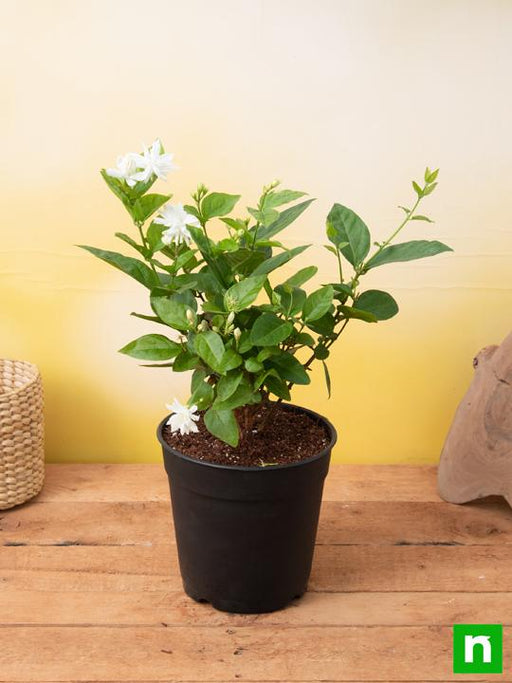
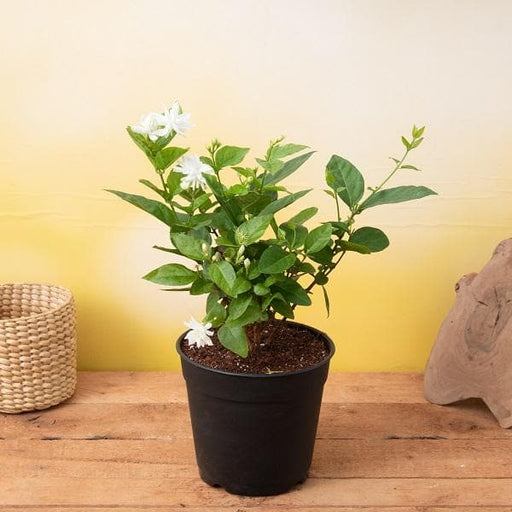 Save 25%
Save 25%
Jasminum sambac, Mogra, Arabian Jasmine - Plant Jasminum sambac, commonly known as Mogra or Arabian Jasmine, is a fragrant flowering plant...
View full details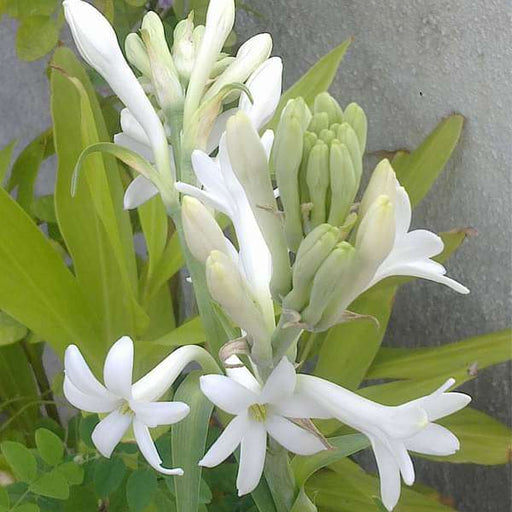
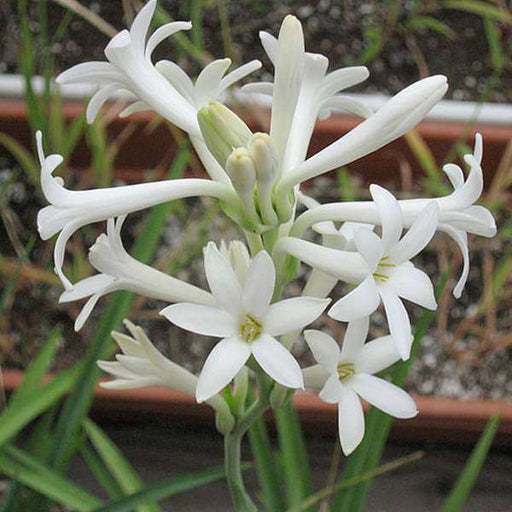 Save 17%
Save 17%
Rajnigandha, Tuberose - Plant The Rajnigandha, scientifically known as Polianthes tuberosa, is a captivating perennial plant renowned for ...
View full details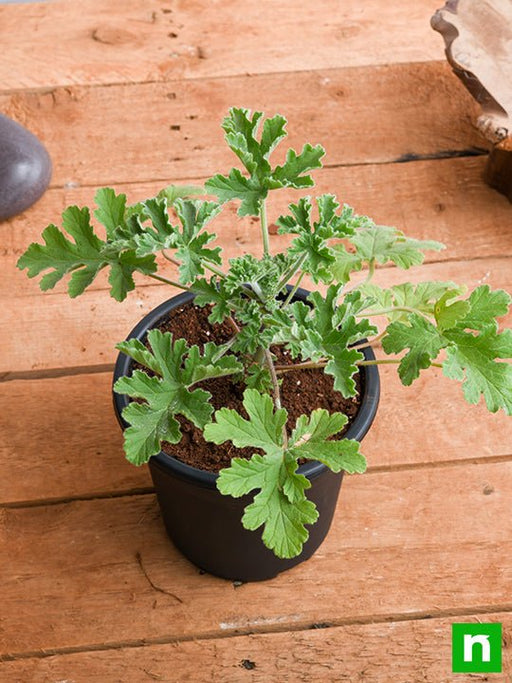
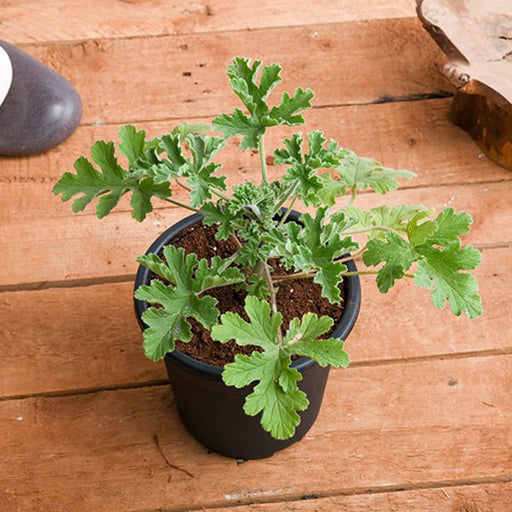 Sold out
Sold out
Citronella, Odomas - Plant The Citronella plant, scientifically known as Cymbopogon nardus, is a tropical grass renowned for its aromatic ...
View full details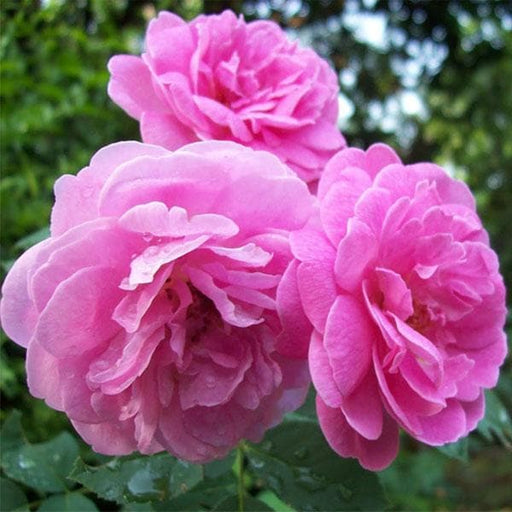 Save 25%
Save 25%
Damascus Rose, Scented Rose (Any Color) - Plant The Damascus Rose, also known as Rosa damascena, is a timeless symbol of beauty and romanc...
View full details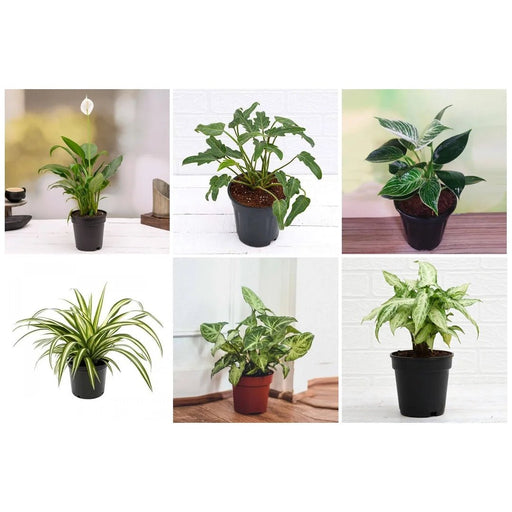
 Save 35%
Save 35%
Best 6 Plants for Perfect Indoor Garden Transform your living space into a lush oasis with our curated collection of the Best 6 Plants for a...
View full details
 Save up to 50%
Save up to 50%
Mini Succulent Garden Pack Transform your space with our Mini Succulent Garden Pack, featuring a delightful collection of 4 any variety beautiful s...
View full details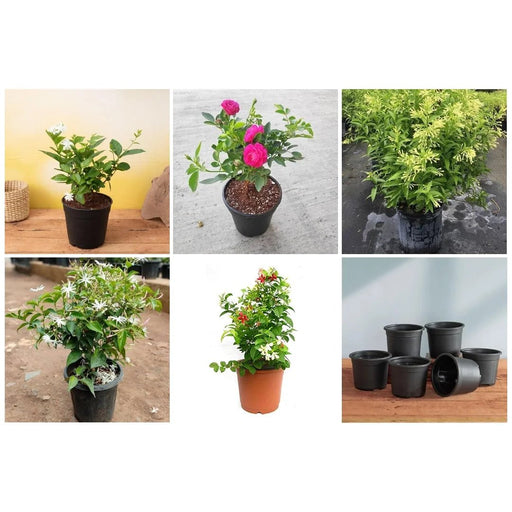
 Save 30%
Save 30%
5 Best Fragrant Plants Transform your garden or indoor space into a fragrant paradise with our curated selection of the 5 Best Fragrant Plants. Th...
View full details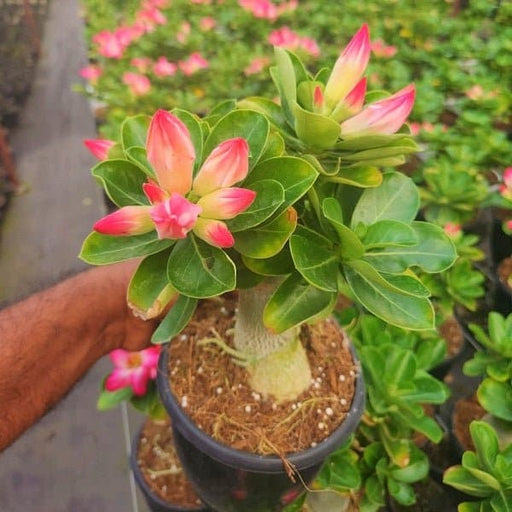
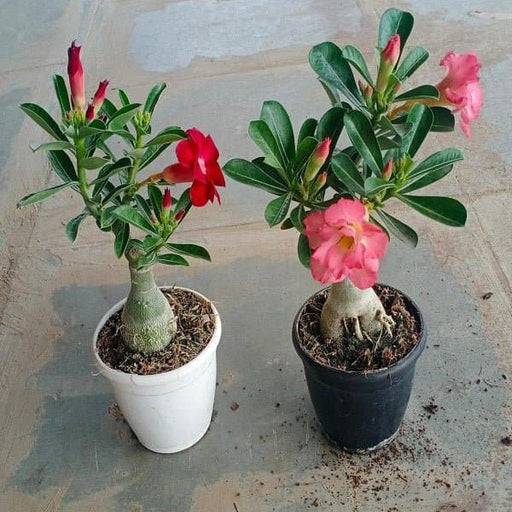 Save 24%
Save 24%
Set of 2 Bonsai Looking Grafted Adeniums Transform your indoor or outdoor space with our exquisite Set of 2 Bonsai Looking Grafted Adenium...
View full details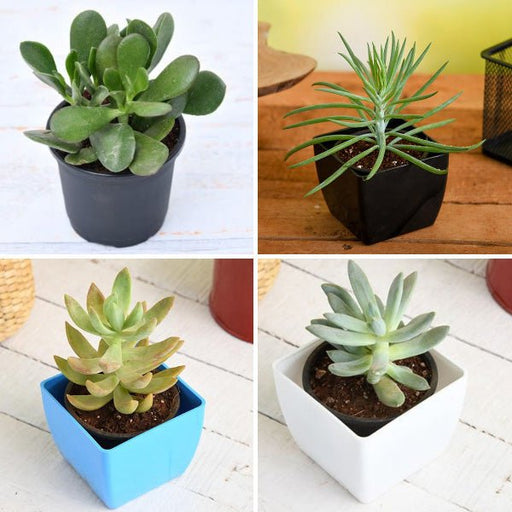 Save 45%
Save 45%
Top 4 Die Hard Succulents Pack Transform your indoor or outdoor space with our Top 4 Die Hard Succulents Pack, featuring a curated selecti...
View full details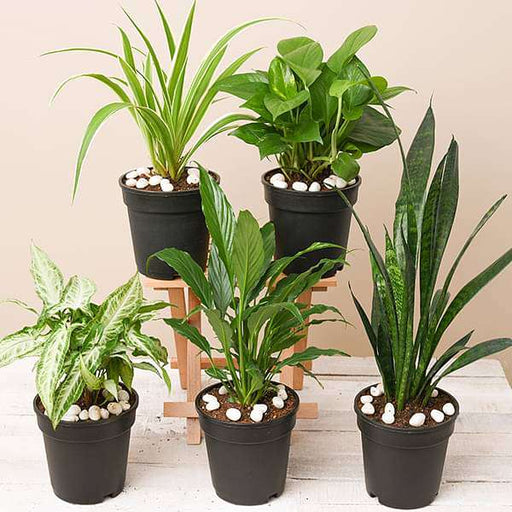
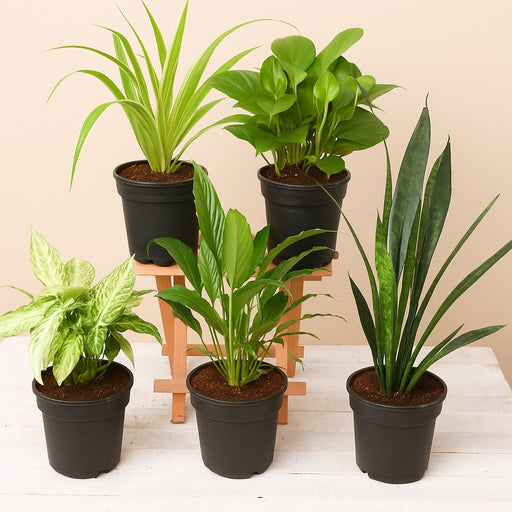 Save 30%
Save 30%
5 Best Indoor Plants Pack Transform your living space into a lush oasis with our '5 Best Indoor Plants Pack.' This carefully curated collection fe...
View full details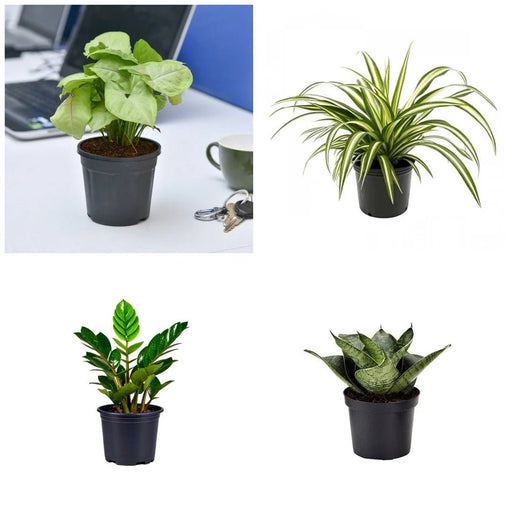
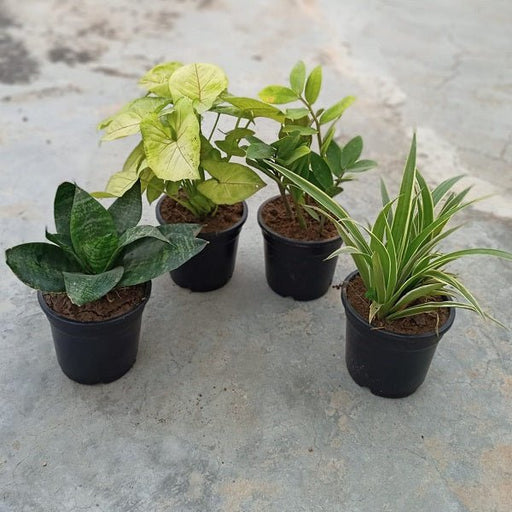 Save 25%
Save 25%
Set of 4 Evergreen Air Purifier Plant Pack Transform your indoor space into a lush, green oasis with our Set of 4 Evergreen Air Purifier Pla...
View full details
Leave a comment